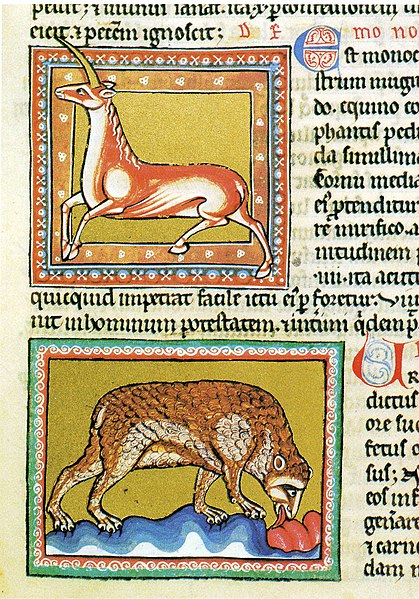A bestiary is a compendium of beasts. Originating in the ancient world, bestiaries were made popular in the Middle Ages in illustrated volumes that described various animals and even rocks. The natural history and illustration of each beast was usually accompanied by a moral lesson. This reflected the belief that the world itself was the Word of God and that every living thing had its own special meaning. For example, the pelican, which was believed to tear open its breast to bring its young to life with its own blood, was a living representation of Jesus. Thus the bestiary is also a reference to the symbolic language of animals in Western Christian art and literature.
Monoceros and Bear. Bodleian Library, MS. Ashmole 1511, The Ashmole Bestiary, Folio 21r, England (Peterborough?), Early 13th century.
"The Leopard" from the 13th-century bestiary known as the "Rochester Bestiary"
The Peridexion Tree
Adam naming the animals, in a detail from the 12th century Aberdeen Bestiary
The Physiologus is a didactic Christian text written or compiled in Greek by an unknown author in Alexandria. Its composition has been traditionally dated to the 2nd century AD by readers who saw parallels with writings of Clement of Alexandria, who is asserted to have known the text, though Alan Scott has made a case for a date at the end of the 3rd or in the 4th century. The Physiologus consists of descriptions of animals, birds, and fantastic creatures, sometimes stones and plants, provided with moral content. Each animal is described, and an anecdote follows, from which the moral and symbolic qualities of the animal are derived. Manuscripts are often, but not always, given illustrations, often lavish.
Panther, Bern Physiologus, 9th century





